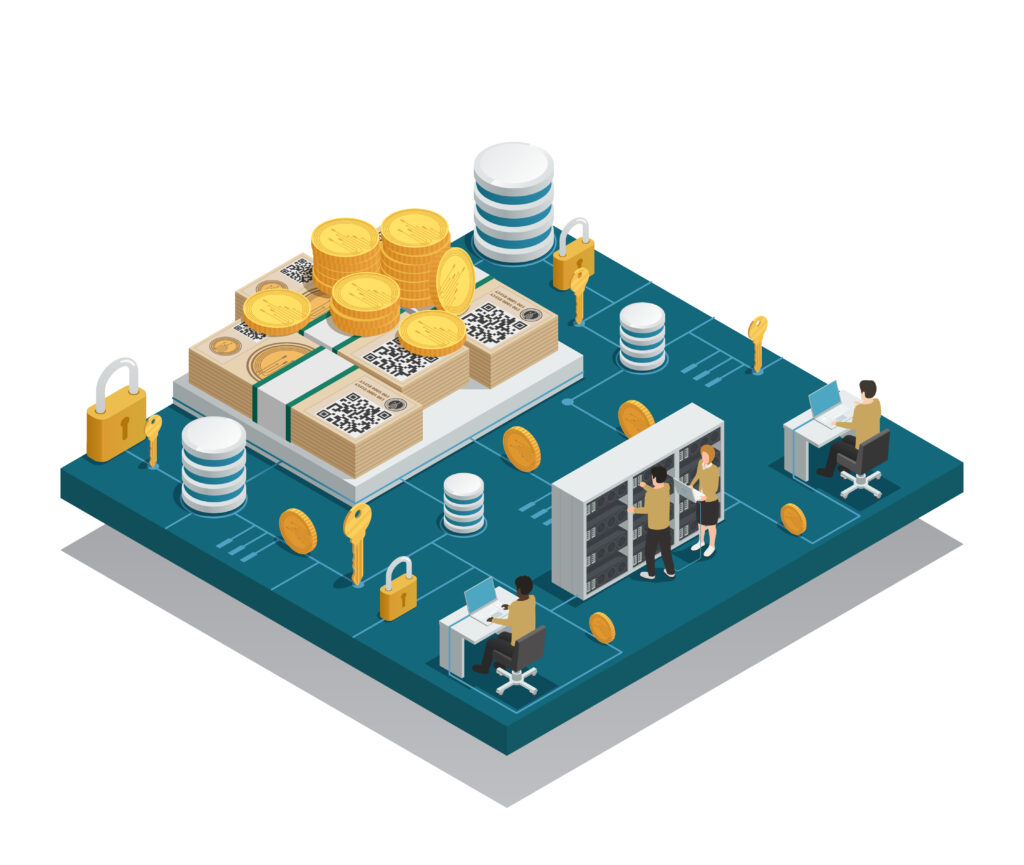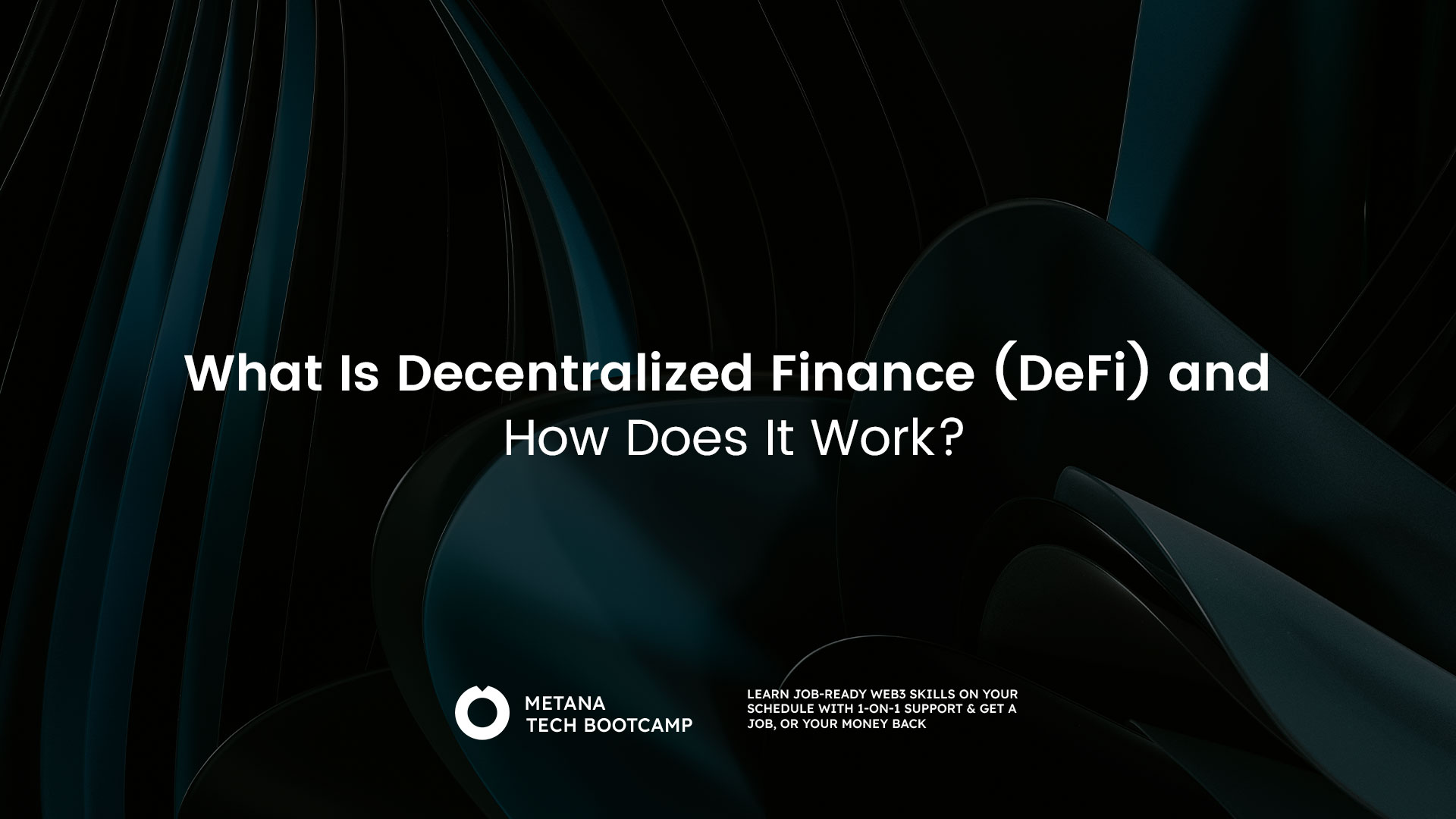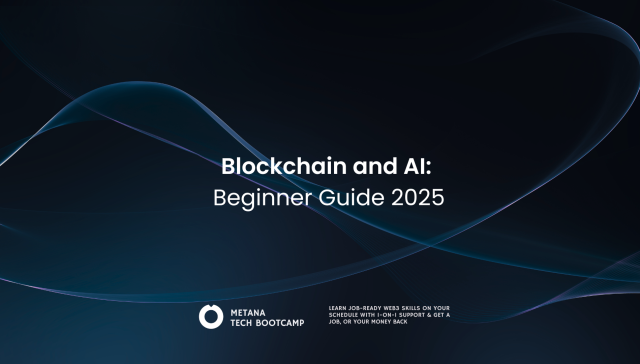Imagine a world where you have complete control over your finances, without relying on traditional banks or middlemen. This is the promise of Decentralized Finance (DeFi), a rapidly growing movement within the Web3 Era. But before diving into this new wave, let’s take a step back and understand the limitations of the current financial system.
Think of your local bank. While it offers valuable services like saving and borrowing, it comes with limitations:
- Centralized Control: Banks and institutions hold significant power, dictating terms and fees.
- Limited Access: Millions lack access to basic financial services due to geographical or economic barriers.
- Opaqueness: Complex financial instruments and processes can be confusing for everyday users.
What is Decentralized Finance (DeFi)?
Decentralized Finance flips the script on traditional finance. It leverages blockchain technology, the same system powering cryptocurrencies, to create a peer-to-peer financial system. Here’s the gist:
- No Central Authority: No single entity controls the system, empowering users and fostering transparency.
- Open Access: Anyone with an internet connection can participate, regardless of location or background.
- Transparency and Automation: Transactions are recorded publicly on a blockchain, and smart contracts execute agreements automatically, ensuring fairness and efficiency.
DeFi offers several advantages over traditional finance, attracting growing interest:
- Financial Inclusion: Anyone can access DeFi services, even those excluded from traditional systems.
- Innovation: DeFi fosters a rapidly evolving landscape of new financial products and services.
- Control and Ownership: Users have complete control over their funds and financial activities.
Web3 and DeFi: A Symbiotic Relationship
The Web3 Era aims to build a decentralized internet, prioritizing user control and ownership. DeFi seamlessly integrates into this vision, leveraging blockchain technology to power its financial applications. Together, they have the potential to reshape the way we interact with money.
How DeFi Works?
Now that we’ve grasped the big picture, let’s peel back the layers and understand how DeFi actually works. Get ready, as we navigate the key building blocks and exciting applications of this innovative space!
The Foundation: Blockchain, Smart Contracts & Wallets
Imagine DeFi as a giant Lego set, where three core components connect to build everything:
- Blockchain: Think of it as a public, digital ledger recording every transaction within DeFi. This shared record ensures transparency and trust, eliminating the need for centralized authorities.
- Smart Contracts: These self-executing agreements written in code live on the blockchain. They automate financial processes based on predefined rules, ensuring fairness and eliminating human error.
- Digital Wallets: These act as your secure vaults within DeFi, storing your digital assets (like cryptocurrencies) and interacting with different applications. Think of them as your personal bank accounts in the digital world.
Unpacking the DeFi Toolbox: What Can You Do?
With these building blocks in place, DeFi unlocks a diverse range of financial applications, each serving a specific purpose:
- Lending & Borrowing: Skip the bank! Earn interest by lending your crypto assets to others, or borrow funds without relying on traditional loan approvals. Imagine peer-to-peer finance on steroids!
- Trading: Decentralized exchanges (DEXs) allow you to trade cryptocurrencies directly with other users, eliminating the need for centralized platforms and offering greater anonymity.
- Yield Farming: Think of this as putting your crypto to work. You “stake” your assets in DeFi protocols, earning rewards or interest based on your contribution to the network.
- Insurance: Protect your DeFi assets from hacks or unexpected events through innovative insurance protocols powered by smart contracts.
- Payments: Sending and receiving money globally becomes faster and cheaper with DeFi payment solutions, bypassing traditional systems and fees.
Remember: This list is just a glimpse into the ever-evolving world of DeFi applications. New possibilities are constantly emerging, driven by the creativity and innovation of the community.
Benefits of DeFi: More Power, More Possibilities
DeFi presents a compelling alternative to traditional finance, offering several key advantages:
1. Accessibility for All:
- Financial Inclusion: Unlike traditional banks with strict requirements, DeFi welcomes anyone with an internet connection, regardless of credit history or background. This empowers individuals in underserved communities and those facing financial exclusion.
- Example: Maria, a small business owner in Kenya, uses DeFi to access a loan for expanding her shop, bypassing limited loan options from traditional banks.
2. Transparency on the Blockchain:
- Public Ledger: All transactions are recorded on a public blockchain, accessible to anyone. This removes the opaqueness of traditional finance, fostering trust and accountability.
- Example: John, a DeFi user, easily tracks his loan interest rates and fees, ensuring transparency and fairness compared to complex traditional loan structures.
3. Efficiency Without Delay:
- Automated Smart Contracts: Smart contracts eliminate the need for intermediaries and manual processes, speeding up transactions and reducing settlement times.
- Example: Sarah needs to send money to her family overseas. Using DeFi, the funds arrive almost instantly compared to the delays and fees associated with traditional money transfers.
4. Your Money, Your Rules:
- Self-Custody: Users hold their own digital assets in their wallets, empowering them with complete control over their finances. No more relying on third parties to manage their money.
- Example: David, a tech-savvy investor, prefers managing his DeFi investments directly, enjoying greater control and flexibility compared to traditional investment products.
5. A Hub of Innovation:
- Open-Source Ecosystem: DeFi fosters rapid innovation as anyone can contribute to developing new applications and protocols. This open-source nature drives continuous improvement and adaptation.
- Example: A community of developers launches a new DeFi insurance protocol, offering users more flexible and affordable coverage options compared to traditional insurance products.

What are the Challenges and Risks?
While DeFi offers exciting possibilities, it’s important to acknowledge the challenges and risks associated with this nascent space:
1. Volatility: Crypto markets are inherently volatile, meaning the value of your DeFi assets can fluctuate significantly. This can lead to sudden losses, especially for those entering without understanding the risks.
2. Security Vulnerabilities: Smart contracts, the backbone of DeFi, are complex code susceptible to hacks and exploits. These can lead to devastating losses, as seen in several high-profile incidents.
3. Regulatory Uncertainty: The regulatory landscape surrounding DeFi is still evolving, with potential implications for its future development and user adoption. This uncertainty can create confusion and hinder wider acceptance.
4. Complexity: DeFi protocols and applications can be intricate and challenging to understand for beginners, potentially leading to user errors and unintended consequences.
But it’s not all doom and gloom! The DeFi community is actively addressing these challenges:
- Security best practices: Developers are adopting rigorous auditing procedures and secure coding standards to minimize vulnerabilities. Additionally, bug bounty programs incentivize security researchers to identify and fix issues.
- Regulation conversations: Industry players are collaborating with regulators to establish clear frameworks that foster innovation while protecting users. Educational initiatives aim to improve user understanding and mitigate risks.
- User-friendly interfaces: Simplifying interfaces and tools can make DeFi more accessible to a wider audience, reducing the risk of errors.
- Community-driven solutions: The open-source nature of DeFi encourages continuous improvement and innovation, with developers working on solutions to address existing challenges and build a more robust ecosystem.
While DeFi holds immense potential, it’s crucial to approach it with awareness and caution. Research thoroughly, understand the risks, and only invest what you can afford to lose. As the ecosystem matures and challenges are addressed, DeFi has the potential to revolutionize the way we interact with finance.
The Future of DeFi: A Glimpse into a Decentralized Tomorrow
Standing at the precipice of a financial revolution, DeFi’s future holds immense promise. Let’s peer into the crystal ball and explore potential pathways for this innovative space:
1. Redefining Financial Inclusion: Imagine a world where everyone, regardless of location or background, has access to financial services. DeFi’s borderless nature and open access can potentially empower billions currently excluded from traditional systems. Microloans, insurance, and savings tools tailored to underserved communities could become commonplace.
2. Evolving Products and Services: The DeFi landscape is a breeding ground for innovation. Expect to see:
- Advanced Decentralized Exchanges (DEXs): Offering greater liquidity, margin trading, and sophisticated financial instruments, catering to institutional investors and seasoned traders.
- Composability: DeFi protocols seamlessly interconnecting, creating complex financial solutions through “money legos.” Imagine combining lending, insurance, and trading strategies in a single, automated flow.
- Real-world Asset Tokenization: Securities, commodities, even real estate, fractionalized and represented on the blockchain, opening up entirely new investment opportunities.
3. Regulatory Dance: Regulators grapple with balancing innovation with safeguarding users. Expect:
- Clear Regulatory Frameworks: Establishing guidelines for DeFi activities, fostering responsible development while protecting consumers.
- Collaboration and Dialogue: Continuous engagement between regulators, industry players, and users to shape a balanced and adaptable regulatory landscape.
4. Interoperability and Bridges: Connecting different blockchains seamlessly will be crucial for DeFi’s wider adoption. Expect advancements in:
- Cross-chain Bridges: Enabling smooth asset transfer and interaction between different blockchain ecosystems.
- Interoperable Standards: Standardization of protocols and data formats, facilitating communication and collaboration across DeFi platforms.
5. Decentralized Identity (DID): Empowering users with control over their personal data and financial identities, eliminating reliance on centralized authorities. Imagine self-sovereign identities unlocking personalized DeFi experiences and streamlined onboarding processes.
Conclusion
DeFi’s ascent challenges the old financial system by providing accessibility, transparency, and personal control through blockchain tech. Even though there are concerns like price swings, security, and changing rules, the community is actively dealing with them.
Upcoming trends like improved DEXs, composability, and real-world asset tokenization offer a variety of financial tools and experiences. Conversations about rules and educating users are crucial for unlocking DeFi’s full potential in creating an inclusive and empowered financial future. Welcome the opportunities, explore with care, and be part of the DeFi revolution!
Glossary of Key DeFi Terms:
Something to your knowledge:
- Blockchain: A digital ledger recording all transactions within DeFi, providing transparency and security.
- Smart Contract: Self-executing code automating DeFi transactions based on predefined rules.
- Digital Wallet: Secure storage for your digital assets (cryptocurrencies) to interact with DeFi applications.
- Decentralized Exchange (DEX): Allows trading cryptocurrencies directly between users, eliminating centralized platforms.
- Yield Farming: Earning rewards or interest by staking your crypto assets in DeFi protocols.
- Decentralized Finance (DeFi): A peer-to-peer financial system built on blockchain technology, offering open access and control over your finances.
- Centralized Finance (CeFi): Traditional financial system relying on centralized institutions and intermediaries.
- Liquidity Pool: A collection of crypto assets deposited by users in DEXs to facilitate trading.
- Impermanent Loss: Potential loss due to price fluctuations when providing liquidity in DEXs.
- Flash Loan: Borrowing a large amount of crypto instantly without collateral, often used for arbitrage opportunities.
- Stablecoin: Cryptocurrencies pegged to real-world assets like USD, offering price stability.
- Tokenization: The process of representing real-world assets (securities, commodities) on the blockchain as digital tokens.
- Decentralized Autonomous Organization (DAO): A community-governed organization using smart contracts to make decisions and manage funds.
- Non-Fungible Token (NFT): Unique digital assets with distinct properties, often used for art, collectibles, and in-game items.
- Web3: A vision of a decentralized internet emphasizing user control, ownership, and open protocols.

FAQs
What is Decentralized Finance (DeFi)?
- Decentralized Finance, or DeFi, is a blockchain-based form of finance that does not rely on central financial intermediaries, allowing for direct peer-to-peer financial transactions.
How does DeFi work?
- DeFi operates on blockchain technology using smart contracts, enabling financial transactions and services to occur without the need for traditional financial intermediaries.
What are the main benefits of DeFi?
- The main benefits include increased accessibility, transparency, efficiency, and reduced costs by eliminating traditional financial intermediaries.
Can anyone participate in DeFi?
- Yes, anyone with an internet connection and a digital wallet can access DeFi platforms and services, subject to the platform’s specific requirements.
What are the risks associated with DeFi?
- Risks include smart contract vulnerabilities, regulatory uncertainty, and the volatile nature of cryptocurrencies.
What is blockchain technology, and how is it related to DeFi?
- Blockchain is a decentralized ledger that records transactions across many computers. It’s the foundational technology behind DeFi, ensuring transparency and security.
What are smart contracts, and why are they important in DeFi?
- Smart contracts are self-executing contracts with the terms of the agreement between buyer and seller directly written into code, facilitating automated, trustless transactions in DeFi.
How does DeFi differ from traditional finance?
- Unlike traditional finance, DeFi is open to anyone, operates 24/7, and removes the need for intermediaries like banks, using blockchain technology instead.
What are stablecoins, and what role do they play in DeFi?
- Stablecoins are cryptocurrencies designed to minimize the volatility of their price, often pegged to a fiat currency, playing a crucial role in DeFi for stable value exchanges.
What future developments can we expect in the DeFi sector?
- Expected developments include improved security measures, regulatory clarity, broader adoption, and the integration of more financial services into the DeFi ecosystem.





